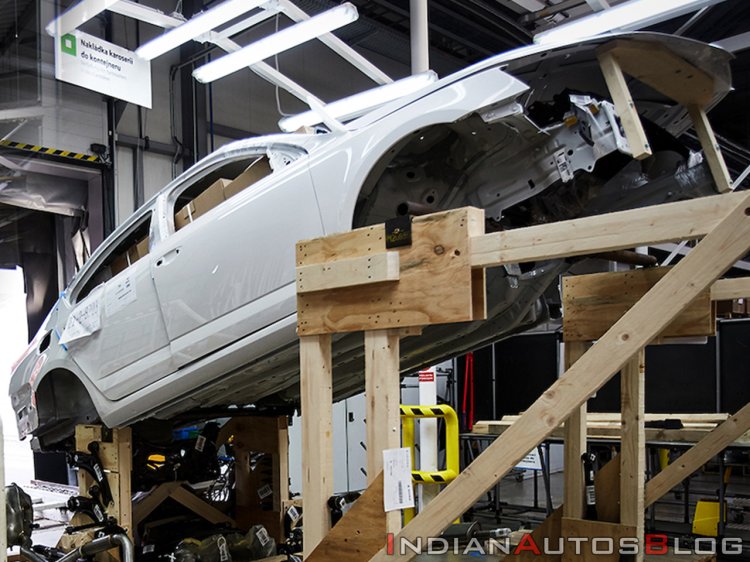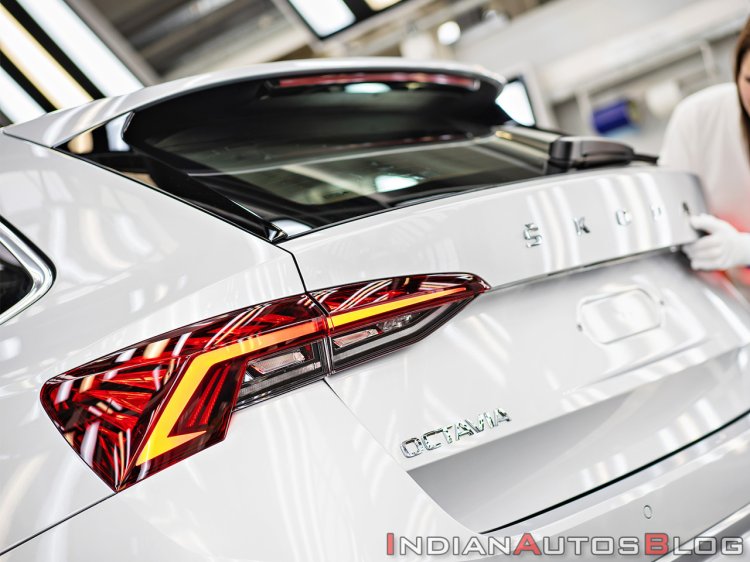Ever wondered how the Skoda Octavia has been reaching India from Europe all these years? In this post, we reveal the journey of the Czech brand’s best-selling model in detail.
Skoda’s line-up in India comprises four models: Rapid, Octavia, Superb and Kodiaq, and of course, their derivatives (Monte Carlo from Rapid, Octavia RS from Octavia and Kodiaq Scout from Kodiaq). Out of the four models emblazoned with the winged-arrow, only the Rapid is locally manufactured. The other three come from Czech Republic, which is Skoda’s home.
Skoda has two manufacturing plants in Czech Republic, one located in Mlada Boleslav and one in Kvasiny. The Octavia is made in Mlada Boleslav and the Superb and the Kodiaq are made in Kvasiny. To avoid hefty import duties to an extent, Skoda ships them in knocked-down kits, which it distinguishes in three stages. In other words, the production line is interrupted in the Czech Republic in a scheduled manner and completed in India.
The most basic stage of knock-down is a disassembled chassis and engine. The middle stage is semi-knock-down (SKD), which includes the parts and components that are yet to be assembled as well. The third stage is complete knock-down (CKD), in which the bodywork, too, is left out for assembly in the country of destination.
In India, there are two plants where Skoda models are assembled, one located in Pune and one located in Aurangabad. According to the officially disclosed information, the shipments are sent to the Aurangabad plant in case SKD models and to the Pune plant in case of CKD models. Given the fact that the Octavia is assembled in Aurangabad, it means that it's an SKD import in India. The same goes for the Superb and Kodiaq as well.
All the components are placed inside the bodywork, which is packed tight with small and large cardboard boxes containing components. The components include even those which are from subcontractors; they’re unpacked and re-packed prior to dispatch so as to fit as many of them as possible into a single component.
Racks, which are special wooden pallets designed to hold all the components belonging to the bodywork being shipped, are used to pack the bulky parts. The components are bolted to or anchored down on these wooden pallets mainly so that they remain fixed in a place. Each component has its designated place and is attached to the rack in a specific order. Then, the racks are loaded into a container and dispatched.
Using lorries, the containers are transported from Mlada Boleslav to the container terminal in Uhrineves district of Prague. Here, the racks are switched to trains, which are used to transport them to the port in Rotterdam, Netherlands. At the Rotterdam port, the knocked-down kits of the Skoda Octavia on racks are loaded onto a ship.
At the beginning of the last decade, a container would only have accommodated two packs holding two vehicles, each containing the bodywork and the components not made in India. A lot of advancements have taken place since, and now, a container is loaded with four packs of bodywork and components not localised (in India).
In its journey across continents, the Skoda Octavia uses the Suez Canal, which is referred to as the ‘Highway to India’. The ocean conditions are extreme and can significantly vary at different places during the journey. The air is wet and salty. The temperature inside the containers can reach up to 70°C. The packaging of the knocked-down kits is done keeping such issues in mind.
The final destination is the port in Mumbai. It takes 44 days to cover the journey of 11,705 km and reach there. After customs clearance and other formalities are done, the containers are loaded onto lorries and shipped to Aurangabad, which is 365 km away.
After their arrival at the Aurangabad plant, the knocked-down kits are inspected to ensure that they match the orders and that they don’t have any damages. Once cleared, they’re ready for assembly. The assembly takes place as scheduled and then the assembled units are tested to ensure there are no defects. If okay, they’re sent to the dispatch yard, otherwise they’re sent back to be fixed.
The dispatch to dealerships then takes place as per the orders, and depending on the location in India, it takes a few more days for the Octavia to reach its respective Skoda dealership. After some pre-delivery checks and cleaning, the car is delivered to its customer.
Skoda is currently selling the third-gen Octavia but it will discontinue this model by March 2020. As early as towards the end of 2020, it will launch the fourth-gen Octavia, the production of which commenced at the Mlada Boleslav plant at the end of last month.



























